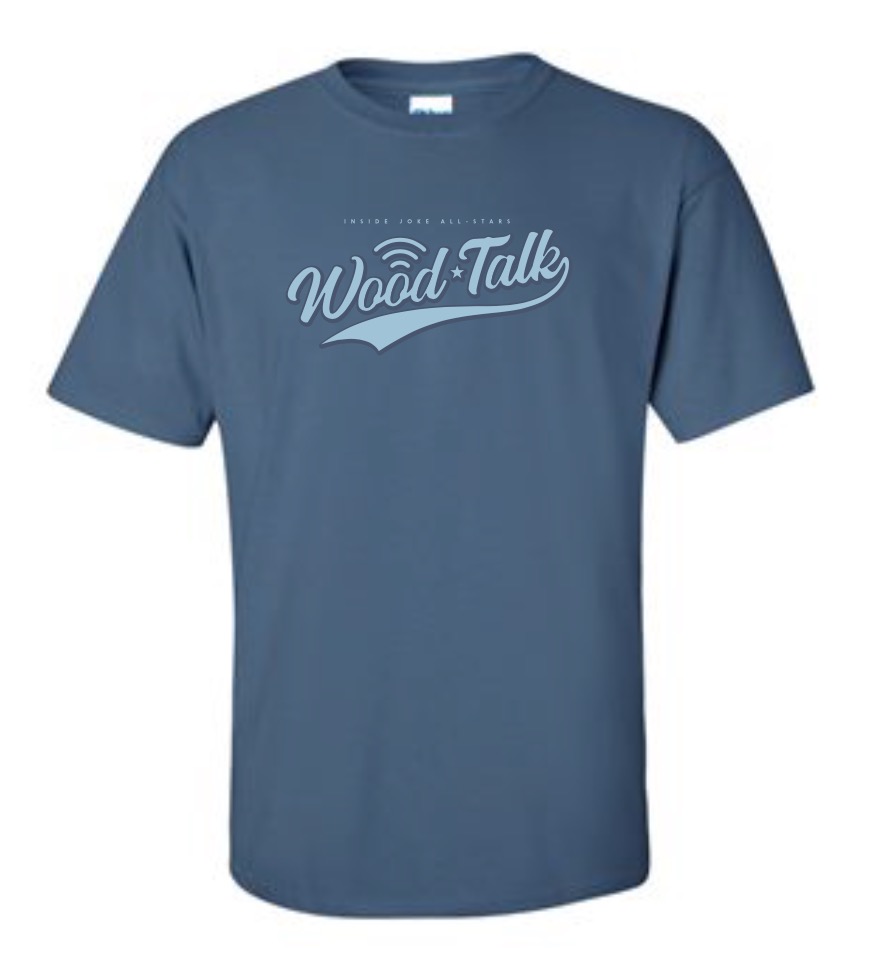Today’s show is sponsored by TableLegs.com. Free shipping on first orders over $50. Enter “Wood Talk” in special instructions when you place your order.
Also by Brusso Hardware. Use coupon code ‘WT2015‘ for 10% off orders at Brusso.com and check out their new video on installing knife hinges located on their Facebook page or watch it below.
On today’s show we’re talking about electrical outlets, dealing with swollen plywood dados, and evenly milling a board with knots.
What’s on the Bench?
- Marc is adding cup holders to his gaming table.
- Matt almost turned a pen but didn’t have the right bushings.
- Shannon is building a brand new Hand Tool School web site.
What’s New?
- Marc found a new podcast called the Reclaimed Audio Podcast, check it out.
- The new Mortise & Tenon Magazine is now available for pre-orders. Check out his introductory video that tells all about the magazine.
- Robert shared a link where you can buy a wooden bodied Gameboy.
- Pete shared a video about how barrel staves are made.
- John shared a video about a cool pipe organ that has little to do with woodworking other than the fact that the back drop is a bunch of firewood.
- Scott Rumschlag put up a great video for his adjustable height desk that uses a counterweight system.
- Shane shared a project that is a Minecraft themed desk for his son.
- Woodworking in America 2016 will be back in Covington, KY on September 16-18th 2016
Kickback
- Matt said that Matt Cremona’s choice of an FDA approved finish was a good one because the Consumer Safety Commission guidelines will give you a headache
- Andy disagrees with Shannon’s suggestion that using your length of board as a guideline for choosing your plane is a good idea.
- Clockmaking expert Rick Urschel called in with his tips for using a bandsaw to cut clock teeth.
Voicemail
- Eric wants to know how to go about doing some pore filling in his finish prep process.
- Mark is designing his new shop and looking for advice on the placement of the electrical outlet.
- Jim wants to know how to size dados in plywood when they swell after the glue is applied.
- Paul is concerned that his board will move when he unevenly mills it because of a knot on one face.
How You Can Support Us
Use the links in the left column and sign up for a recurring donation, kick it up a notch and wear a Wood Talk T-Shirt, or leave us an iTunes Review

4 replies on “WT283 – Chain Taco-ing”
You read my email on the show about applying a finish over the lacquer on a store-bought Teak table. The lacquer had deteriorated badly. I already did the work before I heard your reply (dang!). I applied Arm-R-Seal Urethane Topcoat from General Finishes. Marc mentioned that product or going a step further to Behlen’s RockHard TableTop Varnish. I had no issues brushing on and leveling 3 coats of Arm-R-Seal. The table turned out great, but the finish could be tougher. Kids silverware attacks or handwriting mars the finish. If I did it over again, I’d try the Behlen’s RockHard Tabletop Finish.
PS – you guys are nerds
Shannon,
I just noticed my Stanley #92 is a SHOULDER plane. I recently used it to reduce the size of my tenon cheeks. Since it is a SHOULDER plane what do I use on the cheeks?? I want to make sure I am using the correctly named plane. Thanks for your help.
Kudos to Matt for keeping it on point. Once he said spooning with Samantha and “swelling” in the same breath my mind (and car) went in another direction. You truly are dedicated to the craft.
You can still use a shoulder plane to trim the cheeks. The problem can be if your shoulder plane is narrower than the cheek and you have to make overlapping passes to cover the entire surface. Its not difficult just be aware that you can throw the cheek out of flat if you are not careful. I use a rabbet block plane for this work since I can usually cover the entire cheek with one pass. A router plane is another option and the router plane will be a great tool for many other tasks too.
Just a suggestion to Mark regarding his question on new shop outlets.
You guys hit it right on with the outlet question.
However not nor tip would be to use OSB not drywall on all walls and even ceiling.
That’s what I used and it was screwed on so it could always be taken down for modifications if ever needed. After two coats of Zinzer primer, I gave it a coat of alkyd gloss white to improve lighting.
The greatest benefit is you can mount or screw anything anywhere you need it but the visible screws still tell you where every stud and joist is for really heavy stuff.